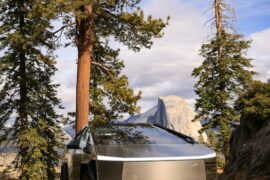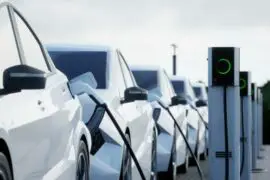In the ever-evolving landscape of automotive technology, Tesla has established itself as a pioneer in electric vehicles (EVs), setting new standards for performance, sustainability, and innovation. Central to the Tesla ownership experience is the question that many prospective and current owners often ponder: Whats the maintenance on a Tesla? This inquiry reflects a fundamental shift in automotive care, as Tesla’s approach to maintenance differs significantly from that of traditional internal combustion engine (ICE) vehicles.
Unlike ICE cars that require regular oil changes, transmission fluid checks, and exhaust system inspections, maintaining a Tesla involves a streamlined and futuristic approach. At the heart of Tesla’s maintenance philosophy lies simplicity, efficiency, and a focus on cutting-edge technology.

Contents
Tesla Maintenance Basics
Tesla vehicles offer a revolutionary approach to maintenance, departing significantly from the traditional upkeep required by internal combustion engine (ICE) cars. This departure stems from the absence of several maintenance-intensive components commonly found in ICE vehicles. Here’s an exploration of the simplified maintenance regimen of Tesla vehicles compared to their ICE counterparts:
Absence of Oil Changes:
In ICE cars, regular oil changes are a staple maintenance task to ensure proper engine lubrication and performance. However, Teslas eliminates the need for oil changes. This is because electric vehicles (EVs) like Teslas do not have internal combustion engines that rely on oil for lubrication and cooling. As a result, Tesla owners are freed from the recurring cost and time investment associated with oil changes.
Elimination of Fuel Filters:
Another maintenance aspect absent in Teslas is the need for fuel filters. ICE vehicles utilize fuel filters to remove impurities and contaminants from the fuel before it reaches the engine. Since Teslas run on electricity and do not require gasoline or diesel fuel, the need for fuel filters is eliminated. This further simplifies maintenance tasks and reduces the complexity of routine upkeep.
Reduction in Moving Parts:
Teslas boast a significantly lower number of moving parts compared to ICE vehicles. This reduction is attributed to the absence of complex ICE components such as pistons, crankshafts, camshafts, and exhaust systems. With fewer moving parts, Teslas experience reduced wear and tear, resulting in a more durable and low-maintenance vehicle.
Streamlined Maintenance:
The simplified maintenance regimen of Teslas translates into a streamlined ownership experience. Tesla owners can enjoy reduced maintenance tasks, lower ongoing costs, and fewer visits to service centers compared to ICE vehicle owners. This simplicity aligns with Tesla’s commitment to delivering a hassle-free and user-friendly driving experience.
Key Maintenance Areas for Teslas
Battery Care:
The battery is the heart of any electric vehicle, including Teslas. Optimal battery care is essential to prolonging battery life and maintaining vehicle performance. Tesla emphasizes the importance of adopting optimal charging practices to maximize battery health. This includes:
- Avoid frequent deep discharges, which can degrade battery cells over time.
- Maintaining the battery within recommended charging levels, typically between 20% and 80% state of charge.
- Minimizing exposure to extreme temperatures, such as both high heat and cold can impact battery performance and longevity.
- Tesla provides recommendations for charging levels and habits through its user manuals and onboard vehicle systems, guiding owners on how to effectively manage their vehicle’s battery for long-term durability.
Tire Rotation and Replacement:
Proper tire maintenance is crucial for Tesla owners to ensure optimal performance, safety, and longevity of their vehicles. Tesla recommends regular tire rotations every 10,000 to 12,000 miles or as needed based on wear patterns. Rotating tires helps distribute wear evenly, extending tire life and improving traction. Additionally, timely tire replacements are necessary when tread depth reaches a certain level to maintain safe driving conditions and vehicle handling.
Brake System:
Tesla’s regenerative braking system is a hallmark feature that contributes to reduced brake wear compared to traditional ICE vehicles. This system harnesses kinetic energy during deceleration, converting it into electrical energy to recharge the battery. While regenerative braking reduces the need for frequent brake replacements, Tesla still advises periodic brake inspections. These inspections are crucial to ensure that brake components, including brake pads and discs, are in good condition and functioning optimally. Despite reduced wear, regular checks help maintain braking efficiency and overall vehicle safety.

HVAC System and Electrical Components:
The HVAC (Heating, Ventilation, and Air Conditioning) system in Teslas plays a vital role in maintaining cabin comfort and climate control. While Tesla’s electric drivetrain reduces the complexity of traditional ICE vehicle HVAC systems, periodic maintenance checks are still recommended. This includes inspecting HVAC components for proper operation, checking refrigerant levels, and ensuring adequate airflow.
Additionally, Tesla owners should pay attention to electrical components beyond the drivetrain, such as sensors, lights, and charging systems. Regular inspections and troubleshooting of electrical systems help detect and address potential issues early, ensuring continued functionality and reliability.
Software Updates and Diagnostic Capabilities
Tesla’s commitment to innovation extends beyond the physical components of its vehicles to encompass software updates and advanced diagnostic capabilities, which play a crucial role in enhancing the ownership experience and ensuring optimal vehicle performance. Here’s a closer look at Tesla’s software updates and diagnostic capabilities:
Over-the-Air Software Updates:
Tesla pioneered the concept of over-the-air (OTA) software updates in the automotive industry, allowing for seamless and convenient updates to the vehicle’s software and firmware. These updates are delivered directly to the vehicle via its built-in connectivity, eliminating the need for manual visits to service centers.
- Enhanced Vehicle Performance: Tesla’s OTA software updates often include optimizations and enhancements that improve vehicle performance, such as increased range, improved acceleration, and enhanced driving dynamics. These updates leverage Tesla’s continuous development efforts to deliver a better driving experience over time.
- Addressing Issues and Adding Features: Beyond performance improvements, OTA updates are instrumental in addressing software-related issues and bugs promptly. Tesla can roll out fixes and patches remotely, addressing concerns raised by owners or identified through internal testing. Moreover, Tesla frequently introduces new features and functionalities through software updates, adding value and enhancing the overall user experience.
Advanced Diagnostic Capabilities:
Tesla vehicles are equipped with advanced diagnostic systems that enable remote monitoring and proactive maintenance. These capabilities leverage real-time data and telemetry from the vehicle’s sensors and onboard systems to monitor various aspects of vehicle health and performance.
- Remote Monitoring: Tesla’s diagnostic systems continuously monitor critical vehicle parameters, including battery health, drivetrain performance, and overall system status. Any anomalies or potential issues are flagged in real-time, allowing Tesla to proactively identify and address concerns before they escalate.
- Proactive Maintenance: By leveraging remote monitoring and data analytics, Tesla can implement proactive maintenance measures. This includes identifying components that may require attention, scheduling service appointments, and even diagnosing issues remotely in some cases. Proactive maintenance helps minimize downtime, reduce repair costs, and ensure that Tesla owners experience uninterrupted driving pleasure.
Importance of Following Tesla’s Guidelines
Adhering to Tesla’s recommended maintenance schedule is paramount for ensuring the optimal performance, safety, and longevity of your vehicle.
Optimal Performance:
Regular maintenance, as per Tesla’s recommendations, helps keep your vehicle operating at its best. This includes tasks such as tire rotations, brake inspections, and fluid checks. By following the prescribed schedule, you can ensure that all components are in top condition, contributing to smooth and efficient operation. Maintaining optimal performance not only enhances the driving experience but also maximizes energy efficiency, which is crucial for electric vehicles like Teslas.
Safety:
Safety is a top priority for Tesla, and adhering to maintenance guidelines plays a significant role in vehicle safety. Routine checks and inspections help identify potential issues early, reducing the risk of unexpected failures or malfunctions while driving. Properly maintained tires, brakes, and electrical systems contribute to overall vehicle safety, providing peace of mind for you and your passengers.
Longevity of the Vehicle:
Teslas are designed for longevity, but regular maintenance is key to preserving their lifespan. Following Tesla’s maintenance schedule ensures that components are serviced and replaced as needed, preventing premature wear and tear. For example, proper battery care practices, including charging within recommended levels and avoiding deep discharges, contribute to extending the battery’s life. By maintaining your Tesla according to guidelines, you can enjoy its performance and reliability for years to come.
Preserving Warranty Coverage:
Adhering to Tesla’s maintenance recommendations is often a requirement to maintain warranty coverage. Failure to follow prescribed maintenance schedules may void certain warranties or limit coverage for repairs. By staying up-to-date with maintenance tasks, you not only protect your investment but also retain the benefits of Tesla’s warranty and service plans.
Resale Value:
A well-maintained Tesla typically retains higher resale value. Potential buyers are more inclined to purchase a vehicle with documented maintenance records and a history of regular servicing. Following Tesla’s maintenance guidelines can enhance the resale value of your vehicle, making it a more attractive option in the pre-owned market.

Whats the maintenance on a Tesla
In conclusion, Tesla’s maintenance requirements offer a streamlined approach compared to traditional vehicles, focusing on key areas like battery care, tire rotations, and software updates. Adhering to Tesla’s guidelines ensures optimal performance, safety, and longevity while preserving warranty coverage and enhancing resale value. Tesla’s role in shaping the future of automotive maintenance is undeniable, highlighting the importance of innovation and embracing new technologies for efficient, reliable, and sustainable vehicle care.
Do Teslas do teslas catch on fire more than other cars in 2024?





